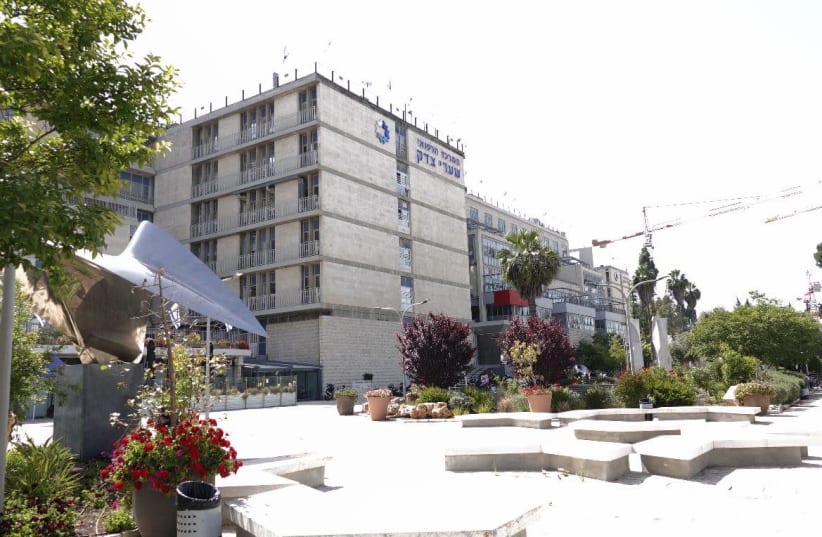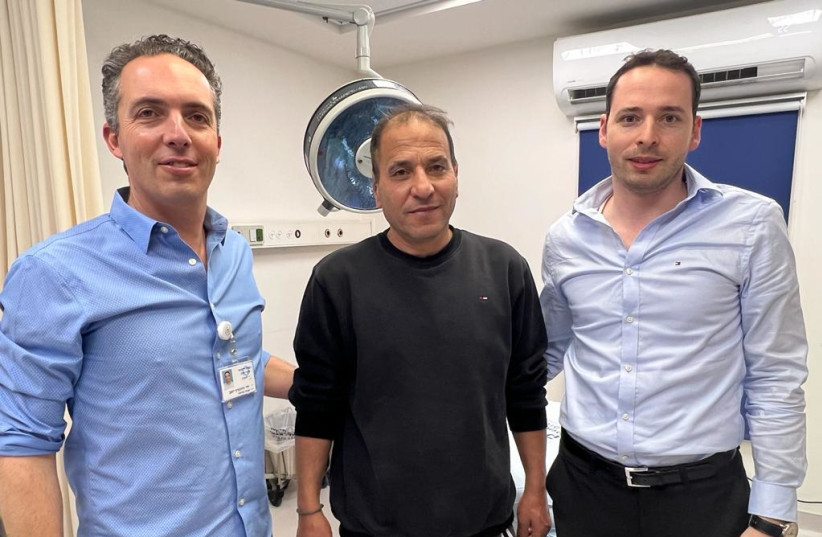A 55-year-old man who lost half of his external ear in a work accident in a carpentry shop that couldn’t be reattached nevertheless has a new ear lobe instead.
New tech and alloplastic
Plastic surgeons at Jerusalem’s Shaare Zedek Medical Center (SZMC) used advanced technology and artificial cartilage to sculpt a new earlobe and implant it on the side of the accident victim’s head.
The patient was rushed to SZMC’s emergency department after a wooden surface fell on him and caused the loss of the upper half of his earlobe. The emergency physicians quickly tried to save the external ear by stitching the top to the stump, but it didn’t receive a sufficient supply of blood to remain living tissue. Instead, he was taken to the plastic surgery department headed by Dr. Yoav Gronovich, who decided to perform a reconstruction using the most innovative approach available today.
The doctors at SZMC restored it while combining artificial cartilage and transferring tissue from his body with innovative technology and alloplastic. These grafts are not made of bone like other types of grafts. Instead, alloplastic is usually made from hydroxyapatite, a natural mineral that is the primary component of bone.
The alloplastic cartilage substitute, which is imported from the US, was adapted in size to the injured man’s opposite ear and covered with tissue taken from his scalp and the skin on his leg.
“At first, I didn’t feel the lack of an ear,” said the patient, an Arab who works in the Jerusalem area. “I thought it was a bleeding wound. I took a rag and pressed so that it would not continue to bleed. But when I arrived at the emergency room, the dimensions of the trauma became clear. My ear was cut in half.”
He asked the carpentry shop owner to quickly bring the missing part to the hospital. It took a while, but in the end the missing half was found.
A quick return to normal
Recent studies have shown the superiority of porous polyethylene (alloplastic) reconstruction over autologous reconstruction based on improved aesthetic results, earlier age of intervention, shorter surgery times, fewer required procedures and a simpler postoperative recovery process.
A durable and permanent option for total ear reconstruction can help alleviate the cosmetic concerns of patients with auricular (ear) deformities. In addition, a normal earlobe helps the person hear better, as it leads sound waves into the middle and internal ear.
Gronovich, who performed the surgery together with the department’s team of plastic surgeons, said this was a severe trauma case in a young man who needed a whole external ear to hold his eyeglasses and for an esthetic appearance. “The chances of attaching the half that was cut off and ensuring that the tissue remained alive were very small,” he said.
The team decided to build a new lobe with a complex reconstruction and the artificial cartilage. Alloplastic is also used in restorations of the scalp and facial bones. The main advantage of this material is that it can be obtained in a perfect fit to match the opposite ear.
“The surgery made possible a full recovery and the man’s quick return to the routine of his life despite the severe injury, while obtaining a very good aesthetic result,” said Gronovich, who was assisted by Dr. Gilad Winder.
Ear reconstruction was initially performed using autologous grafts (bone or cartilage from one part of a person’s body to another) in the 1920s; later, prosthetic ears made of silicone that sticks to the stump and the newer alloplastic implants have been introduced as additional options for ear reconstruction.
The technique was introduced not only for accident victims but also for babies born with defects in the structure of the exterior ear. Each method has its own advantages and disadvantages that lead to surgeons favoring one method over another.
External ear defects that appear at birth, in particular, can be incredibly displeasing to children as they are highly noticeable and lead to social ridicule. Congenital auricular malformations result from improper embryological development.

